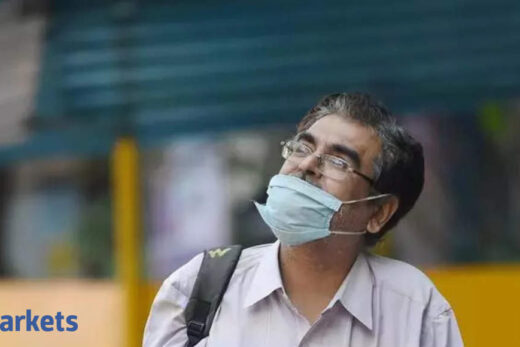Prevalence of serious illnesses & cost of treatment
A serious or critical illness can either be terminal or chronic and the course of medical treatment as well as financial preparation will depend on this. A terminal illness is one where the patient’s life expectancy is less than 12 months, whereas a chronic illness requires long-term treatment of over three months and there may or may not be a cure for such a disease.
Some of the common critical illnesses in India include cardiac diseases, different types of cancer, stroke, paralysis and kidney failure. According to an Indian Council of Medical Research (ICMR) report, cancer cases in India could increase to 15.7 lakh by 2025, a rise of 12% from the existing 13.9 lakh cases. Meanwhile, one in four deaths in India are because of cardiovascular diseases, with ischemic heart disease and stroke causing more than 80% of mortalities, as per the Global Burden of Disease research. Besides, a 2018 estimate put the number of patients on chronic dialysis in India at about 1.75 lakh, with a prevalence of 129 per million population for chronic kidney disorder.
The costs associated with the treatment of these diseases is high, running into several lakhs, because many require long-term medical care and therapy. “In cancer, the treatment is not limited to one surgery or chemotherapy, and the cycle goes on for much longer,” says Bhabatosh Mishra, Director, Underwriting, Products & Claims at Max Bupa Health Insurance. So you could incur Rs 15-20 lakh, with the latest advanced treatments costing even up to Rs 1 crore.
“A typical treatment for heart can range from Rs 1.5-15 lakh in a private hospital in a metro, depending on whether you need a stent, bypass surgery or valve replacement,” says Anup Seth, Chief Distribution Officer at Edelweiss Tokio Life. “Besides, the expenses on contigencies has increased drastically due to Covid,” says Seth.
Even if the Covid-related escalation in costs may be temporary, the overall healthcare expenses are rising at an inflation rate of over 15%. The hospitalisation and medical costs are much higher in metros and tier 1 cities, compared with tier 2 and 3 towns. So if you are over 40 and have a family history of such illnesses, you need to prepare a financial plan to deal with it on priority. Where do you start?
Which insurance covers do you need?
Here are the plans you can buy to cover most of your liabilities and risks for a serious illness.

*Premiums are indicative and may vary. All plans for 30-year-old male in Delhi. Term plan with annual income of Rs 15 lakh. CI plan covering 16 illnesses
Financial planning
“You need to consider three types of expenses while planning for such an illness,” says Mumbai-based Financial Planner Pankaaj Maalde. “One is the regular hopitalisation, which is taken care of by a basic health plan; then there are expenses in long-term medical care which do not require hospitalisation every time and are not taken care of by an indemnity plan; and the third is the income replacement in case of job loss, or as a supplement if your capacity to earn reduces,” he says.
The type and stage of critical illness also determine the expenses and level of financial readiness that will be required. So you will need a combination of insurance plans and a contingency corpus to cover all the expenses.
Health insurance: Start with a basic indemnity plan, which reimburses your hospitalisation expenses, be it for surgery or transplant or urgent medical supervision. “One should have adequate health insurance depending on one’s lifestage and the city where one resides. In a place like Delhi, one should have a Rs 20-25 lakh plan,” says Mishra. “It will not give 100% protection because some treatments will still be outside the scope of this cost. For instance, a liver transplant will cost upwards of Rs 40-50 lakh,” he adds.
At the very least, have a Rs 10 lakh plan if you are in a metro, and a Rs 5 lakh plan if you are in a smaller city or town. Since a higher sum assured will increase the premium, a cost-effective option is to go for a smaller basic plan and combine it with a bigger top-up or super top-up plan. So take a Rs 5 lakh base plan and a Rs 15 lakh top-up plan.
Critical illness insurance: As opposed to an indemnity plan, a critical illness plan is a fixed benefit plan, which means you get a lump sum on the diagnosis of the disease. This serves two purposes. One, it takes care of all incidental expenses not covered by the basic health plan, and second, it replaces the income that comes from job loss. You should have a critical illness plan that is 5-10 times your gross annual income, or anywhere from Rs 25-50 lakh.
However, there are several points to keep in mind before buying one. Remember that for the plan to come into effect the patient will need to be alive for 30 days after the diagnosis, as stipulated by most insurers.
There are several plans in the market that cover upward of 30 illnesses. The highest number of illnesses at the lowest premium should not be your criteria for buying a plan. Go for illnesses that you are genetically predisposed to, that is, you are likely to contract due to your family history, say, heart disease or cancer. Also, heart disease can include various procedures that could be listed as separate treatments. So pick the common ones carefully, including cancer, heart disease, stroke, coma, etc.
Treatment costs for top 4 serious illnesses
A. Cancer
Surgery: Rs 3-6 lakh
Chemotherapy: Rs 50,000-2 lakh per session. Rs 5-10 lakh
Radiotherapy: Rs 2-20 lakh
Immunotherapy: Rs 80,000-1 lakh a month. Rs 15-40 lakh for 2 years
B. Heart disease
Angiography: Rs 20,000
Angioplasty: Rs 2.5-6.5 lakh
Valve surgery: Rs 2.5-6 lakh
Bypass surgery: Rs 2-5 lakh
C. Kidney failure
Dialysis: Rs 2,000-5,000 per session (3 times a week)
Kidney transplant: Rs 5-10 lakh
D. Stroke
Brain stroke: Rs 5-10 lakh
*Costs are indicative and may vary.
Second, read the terms and conditions carefully regarding the stage at which the cover will be enforced. “As per Irdai guidelines, there are only specific illnesses that are covered and some of these are defined to be covered only for the last stages. So if the premium is very high, buying such a plan is not advisable,” says Maalde. For instance, for renal and liver diseases, the plan will come into effect only in case of “permanent and irreversible failure of both kidneys/liver function”, as per the guidelines.
However, as Seth and Mishra affirm most other illnesses, including cancer, stroke, heart attack, etc, are covered for all or most stages and usually the payout is given even before the treatment starts.
While there are several independent critical illness plans in the market, life and health insurers also provide it as a rider at an extra cost. It is better to buy an independent plan since it will be more comprehensive with fewer limitations.
Critical illness vs Terminal illness insurance
Here is the difference between the two types of covers available for chronic and terminal illnesses.

Term & terminal illness insurance: It is important to have term insurance plan at any life-stage as long as you have an income and dependants. What many do not know is that some insurers also offer a built-in terminal illness plan (at no extra cost), which gives either the full sum assured or 25% of the sum assured as lump sum, on the diagnosis of a critical illness where the life expectancy is less than 12 months. This amount can be useful for treatment costs in the final stages of the illness and help replace the breadwinner’s income.
Contingency fund: If you are over 45 years of age, it is important to have a medical contingency corpus apart from the regular emergency fund. This will come in handy for expenses on medicines, doctor’s visits, therapy, etc, in case of a serious illness. While a critical illness plan also helps you take care of these expenses, the amount may not be available if the stage of the illness prevents you from invoking the cover. For instance, if you have a cover that gives the payout on the diagnosis of stage 3 of cancer, and you have been diagnosed with stage 2, you will not be eligible to get the sum assured. In such a case, you will need ready money to take care of all medical expenses from your pocket.
“You should have a corpus of at least Rs 3-5 lakh, and ideally of Rs 8-10 lakh, especially if you are in a metro,” says Maalde.



